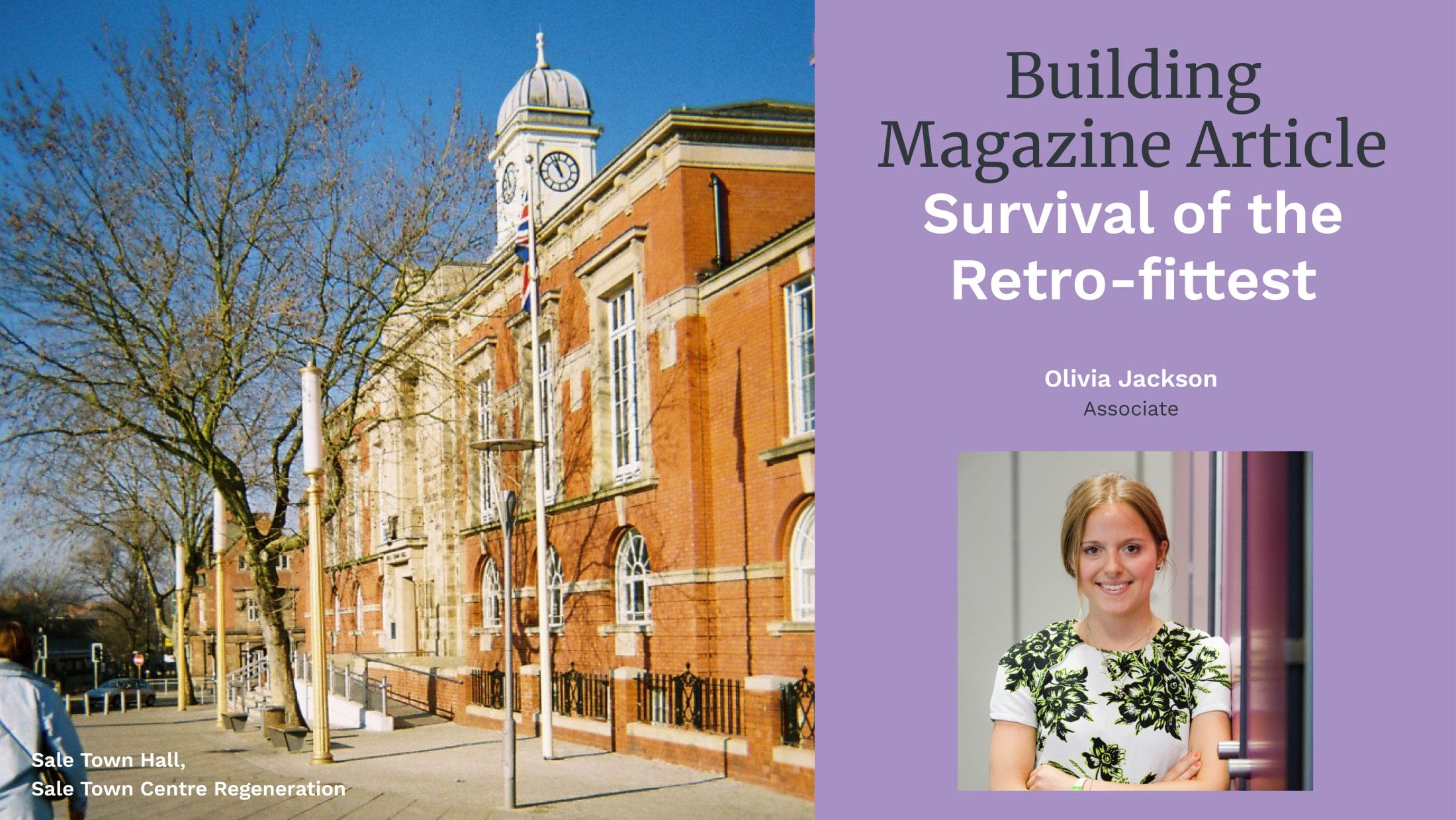
Local authorities can play a pivotal role in creating sustainable placemaking strategies, writes Olivia Jackson for Building Magazine.
“We need to take a wider perspective, and a fitting place to start is with public sector portfolios which typically represent a diverse mix of buildings owned by leaders of the community. The public sector has the wherewithal to be a role model for normalising retrofit solutions, but cannot do it alone.”
Retrofits, while applicable to all types of property assets, have typically been the domain of buildings deemed ‘beautiful’, even when they may not lend themselves to adaptive reuse. By contrast, ‘ugly’ yet practical architecture is rarely considered capable of becoming something which we could value. In this we limit not only our own creativity but our fundamental ability to reach net zero within the next twenty to thirty years.
We need to take a wider perspective, and a fitting place to start is with public sector portfolios which typically represent a diverse mix of buildings owned by leaders of the community. The public sector has the wherewithal to be a role model for normalising retrofit solutions, but cannot do it alone.
The key role of retrofits in the climate agenda
Changing perceptions is crucial. Reaching net zero carbon is contingent on prioritising existing assets over new, highlighting a real gap in the market for creatively adapting buildings that may appear past their prime.
Current conversations are largely focused on how to retrofit the swathes of existing, inefficient housing – a challenge that the PAS2035 seeks to address with its specification for ‘whole house’ energy efficiency measures. The PAS2038 has more recently set out similar standards for non-domestic buildings.
Energy efficiency could be the key player in unlocking a net zero future, yet – as the International Energy Agency notes – “The vast majority of energy efficient investments will remain unrealised” due to the lack of attention paid to these opportunities in comparison to supply-side possibilities.
We are still miles away from convincing private owners (accounting for circa 63% of households) to consider retrofit solutions and it is vital, therefore, that retrofit is not only normalised but given greater visibility on the public stage. Whilst much of this must be triggered by central government, there is a need for strong local role models to present sustainable retrofit solutions as both a conscious and obvious choice.
Why local authorities are the perfect role models
As we transition from pandemic to endemic, there is a driving need to review all public sector assets to understand how the rise of home working, the ‘levelling up’ agenda, and the decline of the high street, have affected their performance. This provides the perfect opportunity to discuss the retrofit, adaptation and reuse of existing assets. As part of this, local authorities can play a pivotal role in bringing together a dedicated collective of public sector partners within their locality to create sustainable placemaking strategies tailored to those regions and communities. Such strategies should aim to extract maximum use and value from the combined portfolio of existing assets.
Leading the way in this space, the Scottish Government recently embraced a five-year investment plan based on a new “common hierarchy which prioritises enhancing and maintaining [our] existing assets over new build”. This structure for decision making was proposed by the Infrastructure Commission for Scotland, which published its Phase 1 key findings report in January 2020, setting out a 30-year vision for infrastructure across Scotland and a clear Investment Hierarchy to fundamentally reshape the appraisal methodology. The paper sets out a chain reaction of assessments to: determine future need; maximise the life of existing assets; re-purpose and co-locate; and replace, create or build new assets. In their words, “something new might only be built if there is still a demonstrable need for a facility and an existing asset can’t be repurposed”.
This strategy re-orders the historical thought process and provides a simple but effective structure to ensure that sustainable retrofit solutions become a priority and not an afterthought.
We all need to get on board – including designers
This is a sentiment we should all get behind – not only public sector organisations but also the design and construction industry that supports them.
There is encouraging progress as more companies are investing in retrofit qualifications and solutions, but there is more work to be done to de-stigmatise ‘ugly’ architecture. Too often it is assumed that such buildings have outlived their natural life, when what is really needed is a change of outfit and a new perspective. For instance, if the Hawkins\Brown conversion of Park Hill taught us anything, it should be that judging a building by its cover only betrays a limit of our own imagination.
The surveyors, architects and designers working on portfolio optimisation, for their part, can help the public sector to embrace a retrofit-first approach, guiding it in evaluating assets against an emerging ‘future need’ and identifying where buildings can be creatively reimagined to deliver exciting future projects.
Moving forward we must prioritise identification of the ‘retro-fittest’, creating both sustainable future assets and relatable, accessible examples of retrofit projects which light the way for more communities to follow suit.
Related posts



